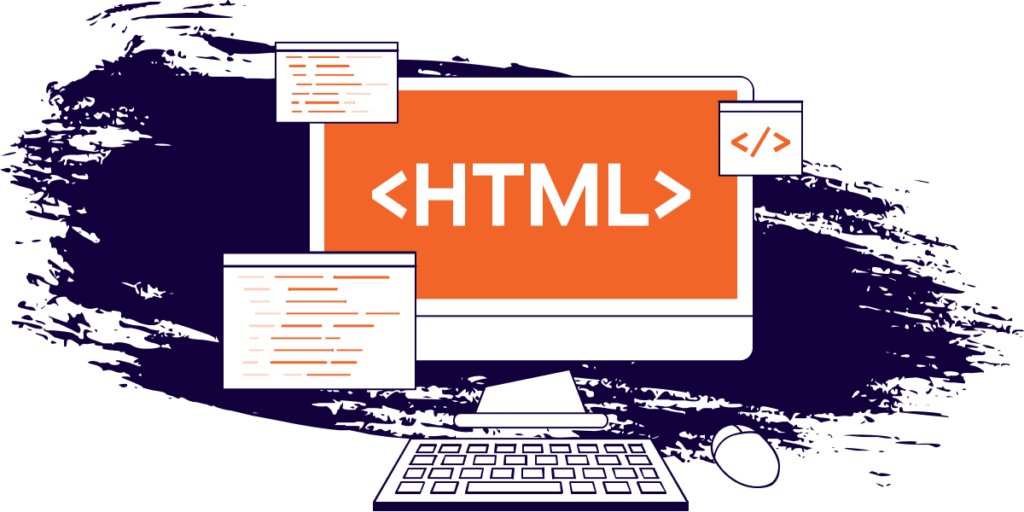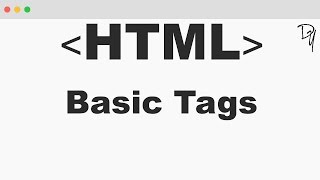HTML, or HyperText Markup Language, is the standard language used for creating web pages. It provides a set of tags that define the structure and content of a web page. These tags, also known as elements, form the building blocks of web development. In this article, we will explore the basic HTML tags that are essential for web development.
Table of Contents
HTML

HTML is a markup language that is used to create web pages. It provides a set of tags that define the structure and content of a web page. These tags, also known as elements, are essential for building a web page. HTML is the foundation of the web, and without it, the internet would not exist. In this article, we will explore the basic HTML tags that are necessary for web development. These tags provide the structure and content that make up a web page and are the building blocks of web development.
What are Basic HTML Tags?

Basic HTML tags are the building blocks of web development. These tags define the structure and content of a web page. They are essential for creating a website that is accessible and easy to navigate. Basic HTML tags include headings, paragraphs, lists, links, images, tables, and forms. These basic HTML tags are easy to use and understand, even for beginners. They are the foundation of HTML and are necessary for creating a web page.
Headings
Headings are one of the most important basic HTML tags. They define the structure of a web page and help users navigate the content. Headings are denoted by the H1-H6 tags, with H1 being the most important and H6 being the least important. Headings should be used in a logical order, with H1 being used for the main heading of the page, and H2-H6 used for subheadings. Headings should also be descriptive and give users an idea of what the content of the page is about. Using headings correctly is essential for creating an accessible and user-friendly web page.
Paragraphs
Paragraphs are used to group related text together. They are denoted by the P tag and are essential for creating a readable and organized web page. Paragraphs should be used to break up large blocks of text and make the content easier to read. They should be used to introduce new topics and ideas and provide context for the content on the page. Paragraphs should also be used to create lists and other types of content that are easy to scan and read.
Lists
Lists are essential for organizing content on a web page. They are denoted by the UL and OL tags and can be used for both unordered and ordered lists. Lists should be used to group related content together and make the content easier to read and understand. Lists can be used for a variety of content types, including product features, bullet points, and instructions. Using lists correctly can help to create an accessible and user-friendly web page.
Links
Links are one of the most important basic HTML tags. They are denoted by the A tag and are used to link to other pages or websites. Links are essential for creating a web page that is easy to navigate and user-friendly. Links should be used to provide additional information or resources related to the content on the page. They should also be used to create a clear hierarchy of information and help users navigate the content on the page.
Images
Images are an essential part of web development. They are denoted by the IMG tag and are used to display visual content on a web page.Images can be used to enhance the content on a web page and make it more visually appealing. They can also be used to provide additional information or context to the content on the page. When using images, it is important to use alt text to provide a description of the image for users who are unable to see it. This is also important for search engine optimization (SEO) as it helps search engines understand the content of the page.
Tables
Tables are used to display data in a structured format. They are denoted by the TABLE, TR, and TD tags and are essential for presenting information in an organized and easy-to-read manner. Tables can be used for a variety of content types, including pricing tables, schedules, and product comparisons. When using tables, it is important to use headers and captions to provide context and make the content easier to understand. Tables should also be designed to be responsive and accessible for all users.
Forms
Forms are used to collect information from users on a web page. They are denoted by the FORM, INPUT, and SELECT tags and are essential for creating interactive and user-friendly web pages. Forms can be used for a variety of purposes, including contact forms, registration forms, and feedback forms. When designing forms, it is important to keep them simple and easy to use. Forms should also be designed to be accessible for all users, including those with disabilities.
Conclusion
In conclusion, basic HTML tags are essential for creating a web page that is accessible, user-friendly, and easy to navigate. These tags provide the structure and content that make up a web page and are the building blocks of web development. Understanding and using these tags correctly is essential for creating a successful web page. By using headings, paragraphs, lists, links, images, tables, and forms correctly, you can create a web page that is both visually appealing and easy to use. So, start learning HTML and start building your own web page today! Boost Your WordPress Site’s SEO with HTML Comments.